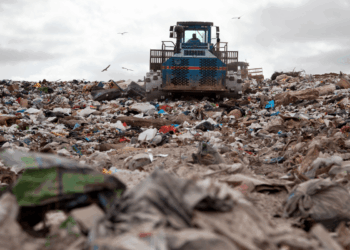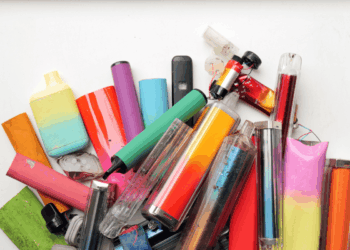This story has been corrected.
The Circular Electronics Partnership’s plan for a circular electronics chain takes a close look at barriers and solutions at every stage, laying out what needs to be done by manufacturers, governments and other organizations.
A recent webinar pulled in industry experts and leaders to discuss what actions need to be taken, and also served as a launch event for the “Circular Electronics System Map: An industry blueprint for action.”
Shela Gobertina von Trapp, director of global marketing and outreach at the Global Electronics Council (GEC), said at the Sept. 22 virtual launch event that it is GEC’s hope that the blueprint “will be useful in our collective understanding of what constitutes a circular electronic product and the respective system needed for these products to circulate.”
“This is very important for being able to take action for changes we need at scale,” she added.
Samsurin Welch, research associate at the Circular Economy Centre at Cambridge Judge Business School, said “you need to have a shared vision to rally around, you need to have shared principals, shared definitions.”
“That’s the power of the work that’s been done here,” Welch said. “It’s a North Star.”
Barriers and enablers
The blueprint builds off the Circular Electronics Roadmap report from the group, which laid out six pathways for circularity in the electronics value chain, barriers to those pathways and 40 actions to address them, including greater transparency, data sharing, better repair options for customers and industry-wide standardization and collaboration. The original roadmap and the following blueprint drew on more than 80 experts from 40 companies, including Dell, Cisco, Google, HP, Huawei, Microsoft and Sims.
Timo Gossler, a sustainability strategist at Accenture who helped create the blueprint, said it was important to the working group to define the term “circular,” which is why the blueprint was created. It settled on three main requirements: being made from circular resources, being designed for circularity and actually being recovered at the end of its lifetime.
“No matter how much a physical product is designed for circularity, if the product is not used efficiently and ends up in a landfill, it is no better than a product with a more traditional design,” he said.
A circular resource also needs to be verified, Gossler noted, and to design for circularity means the item needs to be “durable, repairable, upgradeable, resource efficient and recoverable.”
“The design needs to strike the right balance between these characteristics as well as consider tradeoffs with other product attributes such as performance or safety,” he said.
The blueprint does not offer a “silver bullet answer,” but Gossler said it provides many pathways and a clear direction. It also outlines 12 “system enablers” to help reach circularity.
For circular resources, enablers are standardization, functioning markets and verification technology. For designing, the two enablers are to design collaboratively and to integrate circularity fully into the design process. For recovery, Gossler said there are seven enablers, including repair services, incentives for customers, reverse logistics, disassembly and recycling.
“Almost all these enablers are connected to each other,” he said, adding that “enablers should not be thought of as an afterthought, after the product is already on the shelf.”
David Hirschler, director of OEM, sustainability and legislative affairs at electronics recycler ERI, reminded webinar attendees that “there is no one entity that can fix and solve the problem on its own” and that common standards and standardized material are crucial to a truly circular system.
He said from ERI’s perspective, there needs to be infrastructure set up not only to collect material, but to bring it to where production is happening, connecting ERI’s recycled material supply with upstream manufacturers.
“In the global economy, we need to make sure we can make those connections,” he said.
Welch said circular flows of data will also be vital, allowing everyone in the chain to see what an item is made of, how it was made and whether it’s ever been repaired, along with other relevant information.
“Traditionally, in supply chains these data flows are broken,” Welch said.
Welch added that equity needs to be included in conversations about circular economies to make sure people living in countries with developing and emerging economies “get part of the pie.”
The role of regulation
Webinar panelists also focused on what role regulation should play. Garam Bel, circular economy officer at the International Telecommunications Union, said regulation shouldn’t be viewed just as enforcement, but rather as collaboration and an opportunity to level the playing field.
Regulation can “allow everyone in the system to understand what their role is,” Bel said, adding that about 40% of countries have a regulation, policy or law governing the management of e-scrap, but very few are legally binding or regularly enforced.
Enforcement is important, Jean Cox-Kearns, chief sustainability officer at TES, said, because “you have good actors who will follow regulation and bad actors that won’t.”
“Regulation is one tool, but it can’t be the only one,” she said, adding that more creativity in business models is sorely needed.
Wesley Spindler, managing director and global circular economy lead at Accenture, echoed that idea, saying that “we need these groundbreaking models and innovations to change the game.”
“We need to stop talking about incremental shifts and start thinking about how do we truly shift those value chains and ecosystems to make these models not just a small part of business as usual, but the new way of doing business?” she added.
An earlier version of this story confused the two reports issued by CEP. The report launched at the Oct. 4 webinar was the Industry Blueprint for Action, not the Roadmap.
























